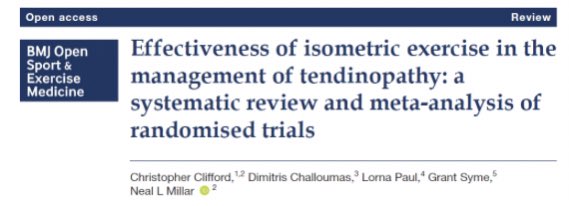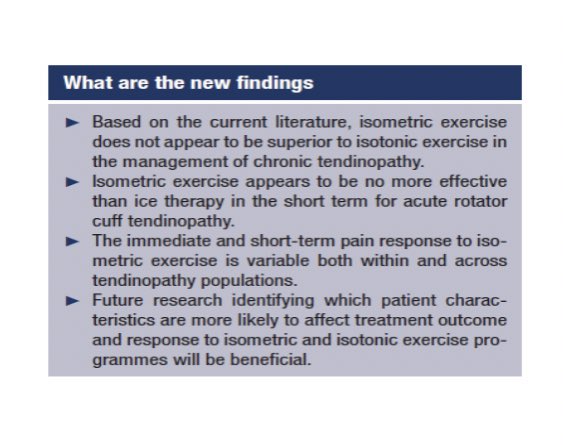1/10 Great working with @DChalloumas88 on this systematic review @BMJOpenSEM. Thanks also to @TendonGlasgow @LornaPaul and Grant Syme for all their input. https://bmjopensem.bmj.com/content/bmjosem/6/1/e000760.full.pdf">https://bmjopensem.bmj.com/content/b...
2/10 There has been significant clinical and research interest in isometric exercise for tendinopathy since the study by Ebonie Rio and colleagues in 2015 https://bjsm.bmj.com/content/49/19/1277">https://bjsm.bmj.com/content/4...
3/10 Isometrics remain topical in the management of tendinopathy. 6 RCTs have been published in the past 12/12 (5 of which were included in our analysis)
4/10 What we did....we compared the effectiveness of isometric exercise to any other treatment or no treatment in tendinopathy. We also did a meta-analysis for the immediate effect of isometric exercise for pain in patellar tendinopathy
5/10 We separated studies based on duration of symptoms (acute and chronic tendinopathy). 3 of the studies were ‘good’ quality and 7 were ‘poor’ quality
6/10 What we found....No significant difference between isometric and isotonic exercise for immediate pain relief in PT
7/10 Isometrics no better than ice for acute rotator cuff tendinopathy. To date, no RCTs have compared isometric exercise to any other treatment for chronic rotator cuff tendinopathy
8/10 Isometrics were not superior to isotonic exercise in chronic tendinopathy for a range of outcomes
9/10 Isometrics are not always required at the start of a tendinopathy rehab programme for pain relief. They can also be used for progressive tendon loading, tendon adaptation and perhaps reduced fear of loading
10/10 Presence or absence of certain patient characteristics and comorbidities may effect response to loading programmes and treatment outcome. https://bjsm.bmj.com/content/54/11/627.long">https://bjsm.bmj.com/content/5...

 Read on Twitter
Read on Twitter




